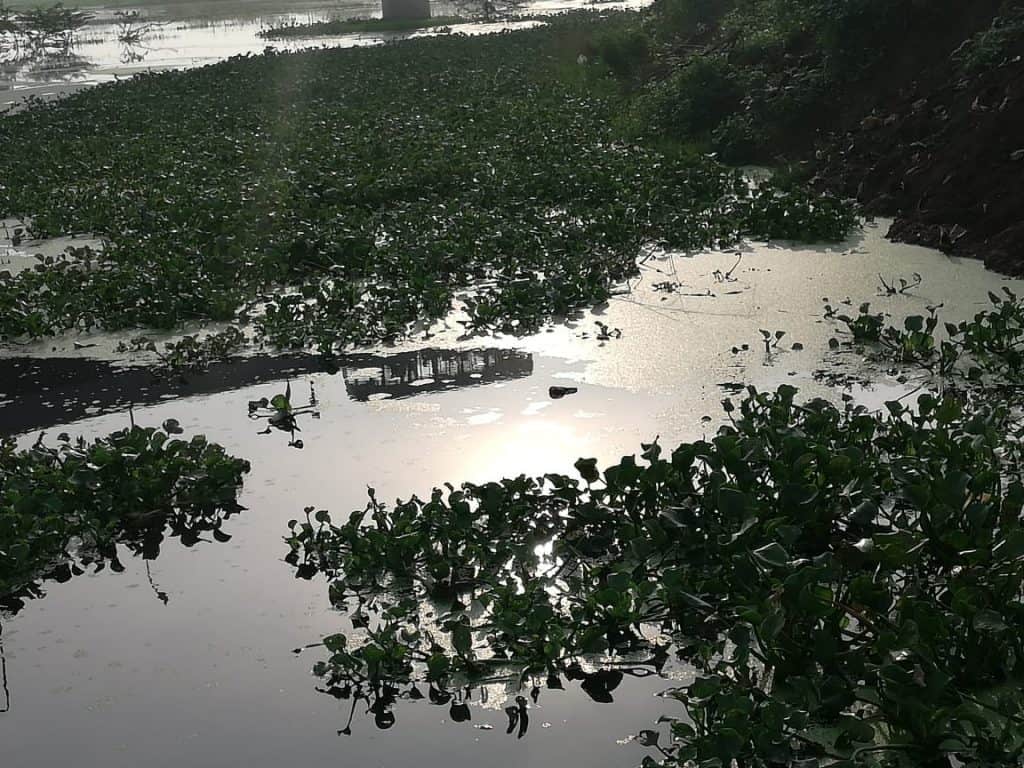With the passage of time and steady environmental degradation, the global push to conserve water bodies has intensified. For Chennai, which saw an unprecedented water crisis last summer when the city had to ferry in water, saving water bodies could be the only way out to avoid another Doomsday scenario.
Ironically, the state government does not seem to share such concern for the lakes and rivers of the city. The sad tale of Korattur Lake is evidence of that. Located in the central region of Chennai, this 590-acre water body is on its death bed: hazardous chemicals such as iron, phosphorus and zinc and untreated sewage was indiscriminately let into the Korattur Lake from December 1st to December 24th last year. Locals say that it is a yearly ritual during heavy rains to prevent inundation in neighbouring Ambattur.
The Greater Chennai Corporation does this with impunity, despite the National Green Tribunal prohibiting it and citizens complaining persistently. Other government offices also share the blame: The Tamil Nadu Pollution Control Board (TNPCB) for keeping mum; the Public Works Department (PWD) for not desilting the lake and misusing the funds allocated for it and Chennai Metro Water Supply and Sewerage Department (CMWSSD) for failing to construct a sewage pumping station.
A tale of destruction
Dark polluted waters from the canal at DTP colony flowed into the Korattur Lake in December. Corporation officials and locals say that the water was a mixture of discharge from industries and sewage from residences.
The southern bench of the National Green Tribunal took suo moto cognisance of the matter on December 12th and ordered the Chennai Corporation to immediately block the flow. However, the civic body blocked the flow only on December 24th, once the damage was done. “We had heavy spells of rain and to prevent inundation in Anna Nagar, the inlets to Korattur lake had to be opened. The inlets will be blocked again,” said Regional Deputy Commissioner of Chennai Central, P N Sridhar IAS had said, when we reached out to him in December.
Also read: We get 200 complaints every day on the Namma Chennai mobile app: P N Sridhar, RDC Central
The magnitude of destruction at Korattur lake sounds alarming, but it is not new. For more than twenty years, the lake has had regular inflow of polluted water. “Due to high iron and phosphorus content, Tamil Nadu government added Korattur lake among the list of unfit lakes. Dairy and nickel plating companies are among the most polluting industries here,” said S Sekaran, Secretary of Korattur Aeri Padukappu Makkal Iyakam (KAPMI), a citizen movement to protect the lake. A 12-member group, KAPMI plays a crucial role in fighting for the lake restoration. Industries that we reached out to refused to comment on the issue.
Absence of STPs
It may be noted that there are no sewage treatment plants in the Ambattur zone, the reason why it is let into the water bodies. According to information from the pumping stations in the zone, a total of 2 crore litres of sewage is generated here. “There are fifty thousand houses around Korattur lake with poor groundwater recharge. If this water is treated and let into the water bodies, there will be no such thing as water crisis,” said Pradeep Kumar, a college student.
The state government has allocated 2000 crores to the Metro Water Department to construct pumping stations across Chennai. “If only the department prioritised constructing pumping stations in this part of the city, the issue would have been solved,” said Harshitha Prasad, a resident. Efforts to reach out to the Chief Engineer of Metro Water department to learn of their plans, if any, met with no success.
Crunching solutions
The NGT, in 2016, had instructed the Tamil Nadu Pollution Control Board to submit a detailed report on pollution levels at the lake. It is not done yet. “We had formed a committee to test water from fifty locations across Korattur lake and the surplus water canal. The board has sealed around 30 companies violating the norms of The Water (Prevention and control of Pollution Act),” said a senior official from TNPCB.
When asked to share the list of the companies, the official said, “We are issuing orders to open a few companies that have complied with the norms. So it is not fair to expose them through the list.”
Despite years of neglect, there is still hope for restoration of the lake. The levels of zinc and iron in the water had come down, when the CMWSSD tested it around four months ago. KAPMI has proposed a three-point solution to restore the lake: de-silting the lake to three feet to remove the polluted soil, stopping the sewage inflow and forming a committee with all the concerned authorities to prevent encroachments.
NGT has directed the concerned authorities to form a committee by January 7th, with the Chief Secretary K Shanmugam as the head. For years, the authorities concerned defied the green court’s orders. But to save the lake and to quench the thirst of residents in this part of the city, it is important to follow the court’s direction.


My residence is close to korattur lake, earlier well water was clear now it is completely yellowish color in the last 4-5 years. I also suspect due to untreated waterinto the lake caused this. I don’t others in close to this area are highlighted this.
Cruel and selfish joke played by corporation officials. Citizens need to name and shame these people who make money killing natural resources